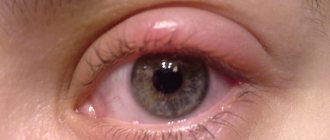Human skin is an important organ that periodically suffers from various diseases throughout life. Many people often develop various neoplasms on their skin, for which they are forced to consult a dermatologist. Warts appear in a significant number of people. Moreover, their locations are visible to outsiders.
Having noticed these tumors on their body, everyone strives to get rid of them. It has become easier to remove them in our time of modern technologies that are actively used in medicine. There are many ways to permanently remove a wart. One of the currently popular methods is cryodestruction. It involves removing warts by exposing the neoplasm to liquid nitrogen . People far from medicine have little idea of the essence of this procedure. Those who decide to use this method to remove warts are naturally interested in the question of how this procedure is carried out and how effective it is. This will be discussed in this article.
What is cryodestruction?
This procedure is usually understood as the removal of warts using liquid nitrogen. During this procedure, the tissue is exposed to low temperature, resulting in deep freezing of the neoplasm and its destruction. Exposure to liquid nitrogen leads to destruction and subsequent exfoliation of wart tissue. After some time, the tissue in the affected area is restored - healthy epithelial cells appear.
The usual cryodestruction procedure is recommended by dermatologists. They prescribe it in the following cases:
- the wart is located in an area where it interferes with the normal functioning of a person;
- a wart that appears causes aesthetic discomfort for a person due to its location in a visible place;
- the neoplasm bleeds or has a tear;
- the wart causes pain, burning or itching;
- increase in the number of warts.
Depending on the shape and size of the wart, one or more sessions . In most cases, one procedure is not enough, especially when there is a need to treat a large area of tissue. If after the first session the effect of the procedures turned out to be insignificant, then, naturally, repeated sessions are necessary. Also, several procedures are necessary if the patient who has warts on the body has reduced immunity. After the patient has undergone the cryodestruction procedure, the doctor may additionally prescribe vitamin complexes and immunomodulatory drugs.
Indications for testing
The possibilities of cryodestruction are not limited to formations on the skin alone. The procedure is effective in removing cysts on the cervix, pseudo-erosion, leukoplakia, papillomas and condylomas in the vagina, and so on. However, the method still finds its main application in dermatology.
Cryodestruction is prescribed for adults - men, women, and children. The method has no age restrictions. It is also possible to carry out the procedure during pregnancy, since no portable or medicinal intervention occurs in this case, and, therefore, the intervention does not in any way affect the condition of the body or the development of the fetus.
Cryodestruction is used in the treatment of all types of benign tumors and some malignant ones. The depth and form of impact is dictated by the area of the lesion and the depth of the lesion. The duration and number of procedures is determined by the nature of the disease.
- Pigmented tumors - nevi or moles. A variety of benign tumors that can have very different appearances. They are formed from pigment-forming cells - melanocytes. There are congenital and acquired forms. The latter are more prone to malignancy. Localized in various parts of the body. Nevus can be quite successfully removed by cryodestruction, including the most dangerous of them – borderline nevus, which is most prone to degeneration. The exposure time - treatment of a single lesion area - is very short - 180 s for any form of nevus. For small lesions – 1 cm in diameter, 1 session is sufficient.
- Warts are neoplasms in the form of a nodule or papilla. As a rule, they are formed under the influence of various viruses. Localization depends on the type: juvenile condylomas often form on the face and hands, ordinary condylomas often form on the hands, condylomas form in the intergluteal folds, in the vagina. Warts are removed both by the application method and by direct exposure to liquid nitrogen. To remove ordinary condylomas, 240–300 s of contact are required, plantar condylomas – 180 s, genital warts are destroyed in 40–60 s.
- Keratosis is keratinization of the skin against the background of hypertrophy of the epidermis. If the area is large, the formation must be removed, as there is a risk of malignancy. Liquid nitrogen copes with lesions in 180–210 s.
- Papillomas are a type of benign tumor caused by papillovirus. The latter is transmitted from person to person. The tendency to degeneration is high, so papillomas should be removed whenever possible. A single lesion treatment session takes 120–180 s.
- Leukoplakia is a disease of the mucous membrane. Often observed on the tongue, in the oral cavity, in the vagina, on the cervix and head of the genital vulva. Leukoplakias are removed in 60–120 s.
- Hemangiomas are bright red formations of irregular shape. They appear in the first years of life and regress as the child grows. As a rule, by the age of 7 they disappear. If recovery is delayed for some reason, cryodestruction is resorted to.
- Keloids are scars, an accumulation of fibrous tissue left after injury, surgery, or other mechanical damage to the skin. The scars are safe, but they look unsightly. Radiotherapy is ineffective here, but exposure to liquid nitrogen may be beneficial.
- Condylomas are also caused by infection with one of the papilloviruses. Most often they occur in the vagina, scrotum, and anus and are transmitted mainly through sexual contact. Cryodestruction, laser therapy and radio waves are used for removal. Although cryodestruction is the most popular method of disposal, it is still believed that laser in this case gives the best effect.
- Calluses are keratinization of the skin that occurs as a result of mechanical factors: friction, compression. Most often it appears on the feet and hands. Calluses do not pose any danger and often go away on their own. Depending on the density of the increased keratinization, the procedure takes 30–120 s.
- Basal cell carcinoma is a type of skin cancer that occupies an intermediate position between benign and malignant tumors. It differs in that it practically does not metastasize. Therefore, excision of the source of the disease in 98% of cases results in complete recovery. Cryodestruction in these cases is perhaps the most effective remedy, while the use of laser is very limited. However, only the direct application method is suitable for treatment, since the application method does not provide the proper freezing depth.
The procedure is performed on an outpatient basis, the number of sessions depends on the area of the lesion. To remove the superficial form, the session time is 180–240 s, nodular – 240–300 s, ulcerative and other types – 240–300 s. In the latter case, monitoring the completeness of the lesion is especially important, therefore, after cryodestruction on days 3.10, scrapings are taken for histological examination.
The video below will tell you how papillomas are removed using this method:
Advantages and disadvantages of cryodestruction
Before you decide to remove a wart using this method, it will not hurt to familiarize yourself with the pros and cons of this procedure.
Advantages of the method
Like any method, cryodestruction of warts has its advantages. The main thing is that the skin heals quite quickly . Currently, the cryodestruction method is the most popular. With its help, you can remove benign tumors that appear on the skin in just a few procedures, without any consequences for the patient. If we talk about the main advantages of this procedure , we highlight the following:
- this method is accessible to most people;
- the procedure itself takes a short time;
- the risks of postoperative sutures are minimal. Scars are also excluded.
- Carrying out this procedure eliminates the appearance and spread of infection on the skin located around the wart.
Disadvantages of cryodestruction
Unfortunately, this method of wart removal has certain disadvantages . We will talk about the most important ones below.
- This procedure is quite painful. Especially if the tumors are localized in areas of increased sensitivity. During the procedure itself, as well as for several days after its completion during the recovery period, the patient feels severe pain. Therefore, it is necessary to take painkillers after completing the procedure.
- The results of cryodestruction depend on the accuracy of the doctor’s assessment of the time and depth of exposure. That is, the specialist’s qualifications and practical experience matter. If the impact on the problem area is carried out incorrectly, then there is a high risk of burns. Traces may also appear after healing.
- If the wart on the patient’s body is large in size, then several sessions are required.
Cryodestruction for skin diseases
For the treatment of acne, open spray or “reed” methods are suitable. Light cryotherapy is indicated for papules and pustules. Longer freezing for 10 seconds is recommended in case of presence of nodes and cysts. For the treatment of keloid scars, several cycles with local administration of glucocorticosteroids are used. The therapeutic effect is observed in approximately 80% of patients.
It has been clinically established that cryodestruction helps patients suffering from psoriatic skin lesions. However, this type of treatment is usually effective if there is a regressing stage of psoriasis. The duration of remission can last from 1–2 months to several years.
Cryodestruction also helps reduce swelling, redness and papular rashes in rosacea. Often they resort to the “reed” method. On average, a therapeutic course consists of 10–12 sessions. The optimal regimen is up to three times a week.
Cryodestruction of benign tumors
Warts vulgaris and genital warts are best treated using the probe method or spray freezing. The duration of cryotherapy must be at least 10 seconds. To completely freeze a wart, it is necessary for a bubble to form at its base. Deep plantar warts are removed in several procedures, which are repeated every 14 days. The best results are observed when treating papillomas and warts located on the face and neck.
To eliminate dermatofibromas, it is necessary to carry out several freezing procedures using the open spray method. Also, this same method of cryodestruction is quite effective for patients with linear epidermal nevi (moles). Only the freezing duration is from one to two minutes. Healing is observed within 1.5 months, but scar formation is not observed. Limited nevi (up to 2 cm) are more treatable than large tumors. Hemangiomas, keloids and hypertrophic scars are successfully removed thanks to cryodestruction. It can be used as monotherapy or in combination with other treatment methods (for example, surgical excision or injection of glucocorticosteroids into the scar area).
The cryodestruction method is a procedure that must be performed under strictly aseptic conditions in order to protect the patient from infectious complications.
Possible consequences
In some cases, after the procedure, patients encounter complications . Therefore, in order for wart removal to occur without serious consequences, it is necessary to carefully select a medical institution, as well as a doctor. You should not attempt this procedure at home. By doing this you will protect yourself from the risks of harming your health.
If, when removing a wart with liquid nitrogen, the specialist uses excessive force or incorrectly calculates the time of exposure of the tissue to nitrogen, then after the procedure is completed, scars will remain on the body. To completely eliminate the risk to the skin, it is necessary to carry out the procedure for removing warts with liquid nitrogen in several sessions. The effect on the fabric should be soft. These will avoid aesthetic defects after completion of the procedure. Removing formations without consequences directly depends on the experience of the specialist , as well as strict adherence to the technique. The qualifications of the specialist who performs the procedure are also of great importance.
Postoperative period
Wound healing after cryodestructive effects occurs by secondary intention. Adverse reactions may occur in patients who have undergone cryodestruction. The most commonly observed changes in the skin are:
- Erythema (severe redness of the skin).
- Vesiculation (the appearance of small bubbles).
- Swelling.
- Exudation (leakage of fluid from small blood vessels into the area of inflammation).
- Signs of peeling.
After removal of benign tumors, as a rule, minimal assistance is required to promote rapid healing of the postoperative wound. It should be treated with antiseptic solutions (for example, Hexicon) and the bandage should be changed daily. The healing process lasts about 2–3 weeks. However, the wound after malignant neoplasms (especially in the face and neck) heals more slowly, over 1–2 months. Wounds from large tumors regenerate in approximately 12–15 weeks.
The development of complications after cryodestruction is extremely rare. Often, temporary adverse reactions are associated with the appearance of swelling and pain after the procedure.
In some cases, bleeding, headaches, fever, wound infection, excessive scarring, and hyperpigmentation are recorded. Serious complications include neuropathy, ulcers, alopecia, hypopigmentation and keloid scars.
Methodology of the procedure
Before directly carrying out the cryodestruction procedure with liquid nitrogen, the specialist carefully examines the area of skin where the tumor has arisen. It determines the number of warts that need to be removed, their type, and size. If the wart is small, the doctor may advise not to carry out the procedure, but to postpone it for a while.
The process of removing tumors on the skin is carried out using the contact method using a special cryoapplicator device. It is cooled to a temperature of 196 degrees below zero. Under the influence of such a low temperature on the wart tissue, it dies and the cells are rejected. After this, a process of rapid skin regeneration occurs in the damaged area.
The duration of exposure of the wart to liquid nitrogen can vary from 10 to 30 seconds. Everything largely depends on the location and size it has. Liquid nitrogen evaporates after 20 seconds. Therefore, the procedure is repeated several times . During its implementation, the cryoapplicator should be in contact with the surface of the wart, as well as with the skin around it to a width of up to 1.5 mm. The effect of liquid nitrogen on the wart tissue causes it to turn white. The cryodestruction procedure is considered completed only after a white halo appears around the periphery.
The essence of the method
Cryotherapy and cryodestruction are two similar areas. However, they have some differences.
Cryodestruction is an operation during which a skin formation is destroyed under the influence of low temperature (deep freezing technique). Exposure to nitrogen with temperatures ranging from -100°C to -180°C causes the cellular composition of the viral growth to die. The neoplasm dies, the skin is cleansed.
Cryotherapy is short-term exposure to low temperatures in the range from -40°C to -60°C. The method can be used to remove small growths of various etymologies in children. One session takes no more than thirty seconds. If the parents do not give permission for the child to be injected with an anesthetic drug, the procedure is carried out without anesthesia.
How the process works
The wart is cauterized with liquid nitrogen by a dermatologist. Before the procedure begins, the patient is given anesthesia at the location of the growth. The person may refuse the injection. In this case, the procedure is carried out without pain relief. When the drug takes effect, the doctor begins the operation.
During cauterization, the dermatologist uses a small wooden stick with a cotton swab wrapped around the end. Some medical centers use a cryoprobe, which releases the active substance onto the growth directly from the reservoir. Liquid nitrogen is stored in cylinders, where the required temperature is constantly maintained. A stick with cotton wool at the end is dipped into the contents of the balloon, after which it is sharply applied to the wart. The main thing is that the tampon used during the procedure is slightly larger in diameter than the pathological formation.
One touch lasts about thirty seconds. The substance evaporates quickly, so several cauterizations may be required. The number of touches and the degree of pressing of the cotton swab depends on the size of the growth.
After cauterization with nitrogen, the wart immediately turns pale and then turns white. When the surface of the growth is covered with “fluff,” cryodestruction is considered complete. Do not be afraid of possible swelling at the cauterization site. Damaged skin begins to change and restore its appearance.
If the tumors are deep enough (plantar warts), the number of procedures can be increased. They are carried out periodically. In the most advanced situations and with relapses of the disease, a person can be treated for 6 months.
Cryodestruction results
When warts are removed with liquid nitrogen, they turn white and change their structure to a more dense one. Immediately after cauterization, the neoplasm may turn red. Later, a bubble containing serous fluid forms on the surface of the skin. It often resolves on its own within a week, leaving no scars or marks on the epithelium.
How to care for wounds in the postoperative period
To complete the treatment, it is necessary to properly care for the skin on which the tumor was located. Prohibited:
- touch and puncture the bubble;
- wet the formation and the crust that appears on it;
- use any cosmetics if a wart on the face has been removed;
- stay in the open sun for a long time.
Disinfection and treatment of a blister that appears on the skin is carried out twice a day. It needs to be smeared with salicylic alcohol. Fukortsin, which has a drying and antiseptic effect, is also used to treat the bladder.
Soon the blister will be covered with a dried crust. If it falls off, a new layer of dermis will begin to form in its place. With proper care of the epidermis, healing time does not exceed ten days. At this time, you need to monitor the condition of your skin. If the blister festers or turns black, you must immediately go to the doctor, who will provide qualified assistance.
Possible consequences and prevention of complications
The method of getting rid of warts using nitrogen has a significant drawback. During the procedure, it is not possible to take biomaterial from the tumor to perform a biopsy. The doctor cannot confidently reject its possible oncological nature. It is necessary to determine whether this tumor is malignant or not before the session.
Cauterizing warts with liquid nitrogen in rare cases leads to the following complications:
- local inflammation, causing pain and swelling of the affected epidermis;
- tissue necrosis.
Possible consequences and side effects can be warned by a qualified specialist who will remove the wart. To effectively remove the tumor, the doctor must choose the optimal temperature and freezing strength. If the impulse is too strong, a scar may remain on the dermis. Therefore, it is important to balance the cauterization force.
Cryodestruction is carried out painlessly if the person does not refuse anesthesia. The patient feels only a slight tingling and burning sensation. When a crust forms, itching may occur. A person should not feel any other uncomfortable sensations.
Features of removing flat warts
Removing flat warts with liquid nitrogen has its own nuances. When performing the procedure, cryomassage is used. During this procedure, a cryoapplicator is used, which is a special reservoir. It has a cylindrical shape and a metal tip, through which cryomassage is performed. During the procedure, tips of various shapes .
During the procedure, the cryoapplicator is positioned parallel to the skin. It is moved with rotational movements over the surface of the affected area until it turns pale. Usually 4 sessions are enough to achieve the desired effect. The duration of each usually does not exceed 2 minutes.
When is cryodestruction of the cervix indicated and why is it prohibited?
The reason for cryodestruction of the cervix can be a variety of pathological changes in the organ:
- Overgrowth of granulation tissue after surgery to remove the uterus, damage to the organ during childbirth or intrauterine manipulation;
- Low-grade dysplasia of the surface epithelium;
- The presence of a polyp in the cervical canal;
- Leukoplakia of the cervix and kraurosis of the external genitalia;
- Presence of condylomas;
- Papillomas;
- Large Nabothian cysts of the cervix;
- Chronic inflammation;
- Pseudo-erosion (cervical ectopia);
- Eversion of the mucous membrane of the cervical canal after childbirth (ectropion);
- True erosion of the cervix.
Thus, almost any focal benign change in the cervix can be subjected to cold destruction.
Before prescribing cryodestruction, the obstetrician-gynecologist will assess the presence of possible contraindications, which may include:
- Acute inflammatory processes in the genital tract;
- Moderate and severe dysplasia;
- Diagnosed sexually transmitted infections;
- Uterine fibroids and endometriosis, which require surgery;
- Ovarian neoplasms;
- Acute general infections;
- Cicatricial changes in the cervix;
- Severe diseases of internal organs (liver, lungs, heart);
- Pathology of blood clotting;
- Menstruation;
- Suspicion or proven malignant tumor of the female genital organs;
- Pregnancy and breastfeeding;
- The area of the neck affected is too large.
If there are obstacles to cryodestruction, a woman may be prescribed preliminary treatment in the form of anti-inflammatory drugs, antibacterial and antiviral drugs. In case of a general infection (ARVI, for example), surgery is postponed until complete recovery.
Features of plantar wart removal
When it becomes necessary to remove warts located on the foot, several sessions are required. It is particularly special to remove warts with liquid nitrogen that appear on the nails or on the soles. You should know that during cryodestruction severe pain occurs, which is due to the fact that the skin is exposed to liquid nitrogen for a long time. In addition, its impact is quite strong. achieve a positive result during the procedure after 5 sessions . Between each procedure it is necessary to maintain an interval of up to 5 days.
It should be said that when removing warts from the sole, the recovery period is quite worse than in other cases. A disability may occur for a period of up to 20 days, since when stepping on the treated area of the foot, a person experiences severe pain.
How is the procedure performed?
The procedure does not require any preparation, is performed on an outpatient basis, and does not have any effect on well-being. Cryodestruction is prescribed by a dermatologist after examining the surgical area. In some cases, a biopsy of the area is performed to confirm the diagnosis.
The procedure is performed the same for all patients of any age. If sensitivity is very high, you can take a painkiller tablet or be satisfied with local anesthesia. Cryodestruction does not cause pain as such. However, the touch of cold metal can be unpleasant, especially for a small child.
- The patient is positioned on the couch in a position that provides free access to the treated area.
- The nozzle is selected: its diameter should exceed the size of the formation by 2–3 mm. When treating basal cell carcinomas, the area is overlapped by 0.5 cm around the perimeter.
- The area is treated with a solution of brilliant green in the first session and sea buckthorn oil in subsequent sessions.
- A tip or cotton swab cooled in nitrogen vapor is applied to the affected area. The technology and retention time depend on the nature of the disease.
If necessary, the session is repeated - usually 2-5 times. In some cases - parakeratosis based on fibrous tissue, for example, the cooling time is reduced to a minimum, but the procedure is repeated 2-3 times during 1 session.
Skin care recommendations
When a bubble appears on the skin after removing a wart, you must avoid getting it wet. It should also be prevented from piercing it. Wounds should be treated with 2% salicylic alcohol twice daily. You can also use a concentrated solution of potassium permanganate . Exfoliation of dead cells occurs after a week. After this, processing can be omitted. The appearance of all warts is the result of a viral infection on the skin. It can be easily transmitted through household contact. Therefore, in order to prevent the occurrence of warts, it is necessary to observe the rules of personal hygiene; you should not use shared towels or washcloths.
Patient reviews
Cryodestruction of warts is a fairly popular procedure, so many patients have already been able to use it. The sensations after the procedure are different for each person. And impressions, of course, also differ. The reaction after cryodestruction is purely individual.
Many patients who have tried cryodestruction on themselves report pain that occurs during the session. They also talk about the occurrence of pain during the first two days after completion of the procedure. Often the pain is severe. This is mainly due to the fact that each person has a different sensitivity to the pain threshold. Children experience especially severe pain after this procedure.
The disadvantages of this method were considered by most patients to be the need for a repeat procedure. If you need to treat a large surface, then you cannot do without several sessions of cryodestruction. This is also required in cases where a person has a weak immune system or the force of action on the root of the wart is insufficient in strength or effect.
Despite some nuances, this method in most cases turns out to be highly effective for removing warts. Many patients who have already used it talk about such a positive thing as the absence of scars and scars after healing of the treated skin area.
Advantages and disadvantages
Cryodestruction is on the border between surgical and therapeutic methods. Of course, there are no incisions or punctures, the integrity of the skin is not compromised, and so on. However, the cold-treated area self-destructs and removes itself after 3-4 weeks, which is more reminiscent of the consequences of invasive treatment.
The method has a number of advantages that make it indispensable in its field:
- cryodestruction is used in the treatment of almost all benign and some malignant tumors on the skin;
- the procedure is absolutely painless: upon contact with cold, the tissue instantly loses sensitivity;
- healthy tissue develops very quickly in place of the removed tissue;
- in most cases, no scars or spots remain, skin hyperpigmentation is possible;
- there is no bleeding;
- removal of the tumor by cryodestruction eliminates the re-development or spread of pathological cells. According to data, tumor recurrence is observed in 2% of cases.
The disadvantages of this method include the following:
- the result is not immediate: from the development of necrosis to the self-removal of the tumor, 3–4 weeks pass;
- not suitable for removing large neoplasms.











